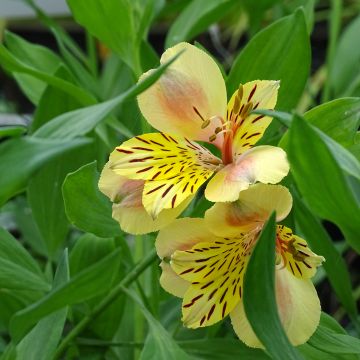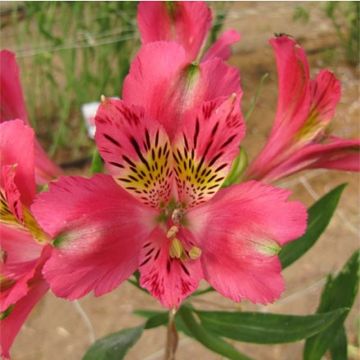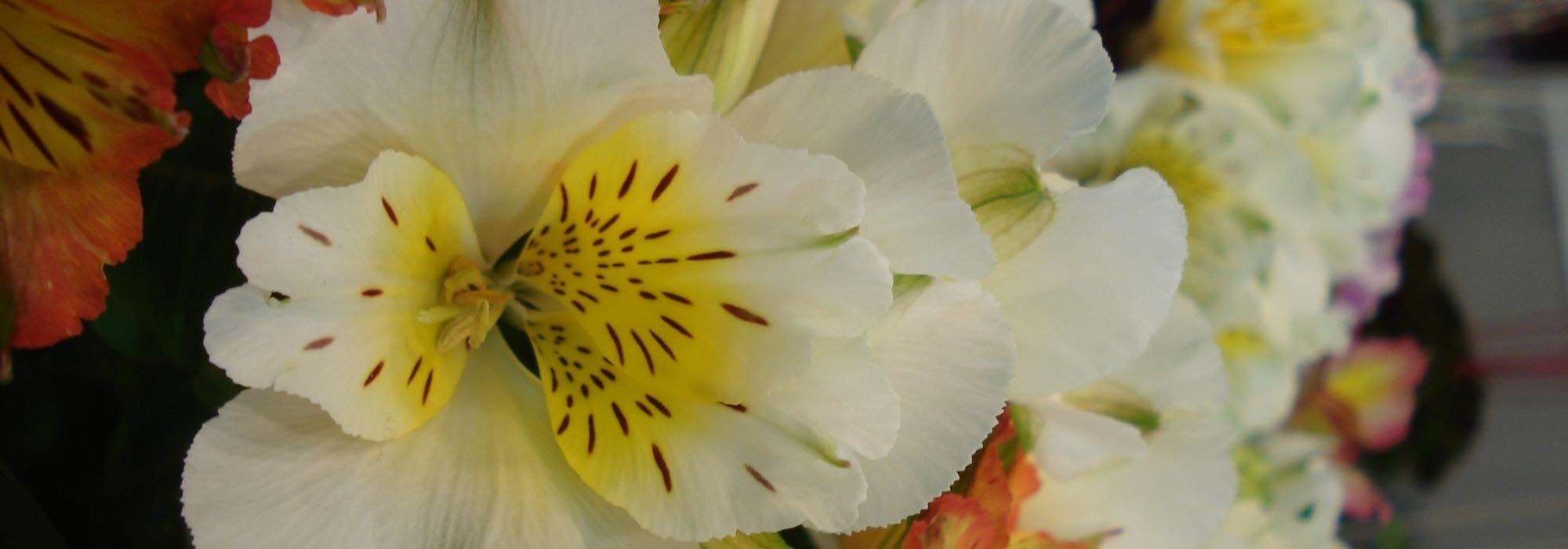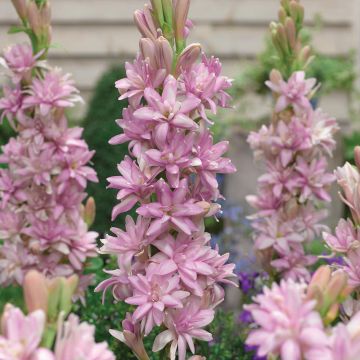

Alstroemeria Duc d'Anjou Pierre
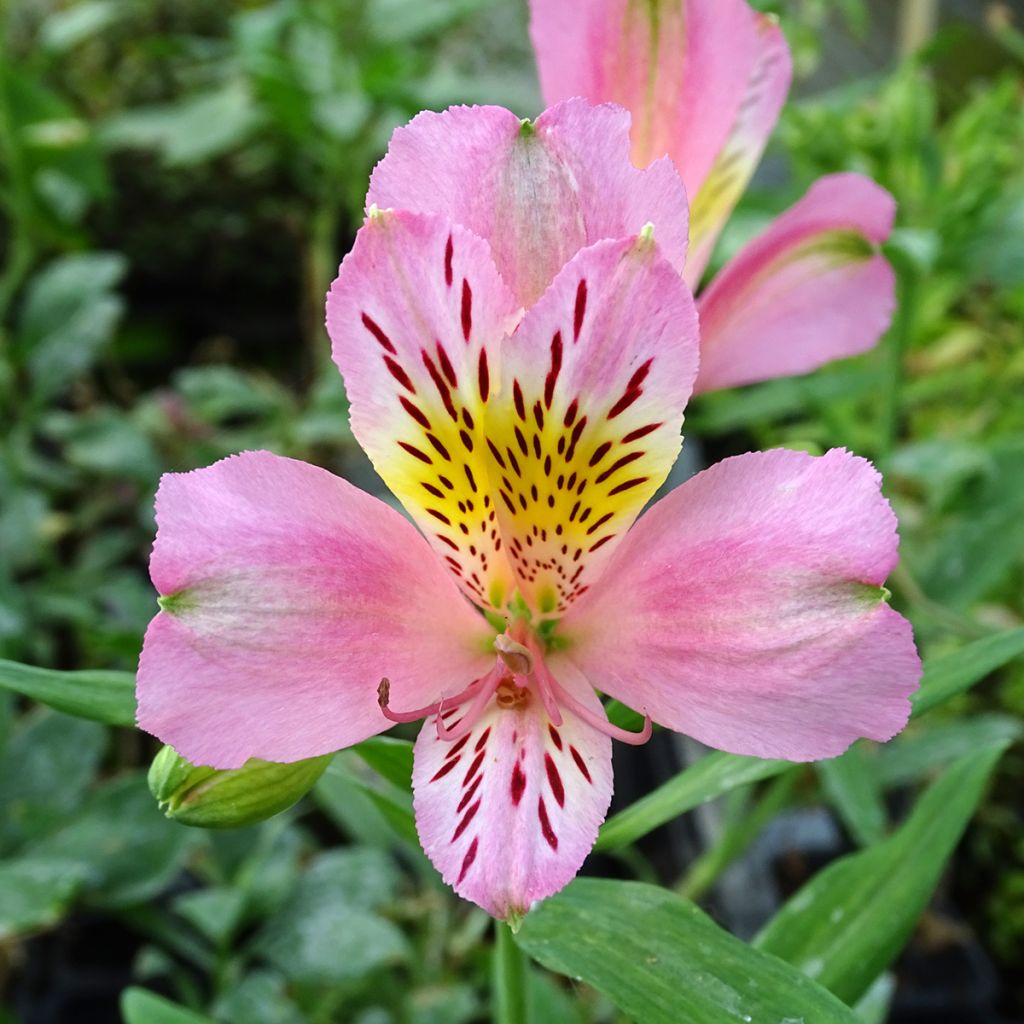

Alstroémère Duc d'Anjou Pierre - Lys des Incas
Alstroemeria Duc d'Anjou Pierre
Alstroemeria Duc d'Anjou Pierre
Peruvian Lily, Lily of the Incas
A disaster, plant completely overturned. Stems crushed. No protection in the package. A real carnage.
GIGI, 28/05/2024
Special offer!
Receive a €20 voucher for any order over €90 (excluding delivery costs, credit notes, and plastic-free options)!
1- Add your favorite plants to your cart.
2- Once you have reached €90, confirm your order (you can even choose the delivery date!).
3- As soon as your order is shipped, you will receive an email containing your voucher code, valid for 3 months (90 days).
Your voucher is unique and can only be used once, for any order with a minimum value of €20, excluding delivery costs.
Can be combined with other current offers, non-divisible and non-refundable.
Home or relay delivery (depending on size and destination)
Schedule delivery date,
and select date in basket
This plant carries a 12 months recovery warranty
More information
We guarantee the quality of our plants for a full growing cycle, and will replace at our expense any plant that fails to recover under normal climatic and planting conditions.
Would this plant suit my garden?
Set up your Plantfit profile →
Description
The Astroemeria 'Duc d'Anjou Pierre' is part of a series of hybrid Inca lilies that includes several medium-sized, hardy and floriferous varieties, with various colours, particularly suited for ornamental beds. This 'Pierre' selection is adorned with beautiful pink flowers touched with green at the tip, striped with brown and spotted with yellow. An exotic flowering that renews itself from late spring to late autumn. This variety can withstand winter in open ground in most of our regions, under a mulch that will protect the stumps from cold and excessive humidity. Its flowers are also very long-lasting in a vase.
The Alstroemeria Duke Pierre is a recent horticultural variety, selected near Angers. All modern Inca lilies are hybrids of several tuberous species native to South America, especially the Chilean Andes. These high-altitude plants belonging to the amaryllidaceae family are more or less hardy, appreciate fresh, well-drained soils in a light and cool wooded area. Slow to establish, they can disappear or ... become invasive! Quirky and fantastic plants, very sensitive to growing conditions, they are "indestructible" when you find the right spot for them.
'Duc d'Anjou Pierre', like all plants in the series, withstands short frosts of around -15 °C in a very well-drained soil and under mulch. The plant quickly forms dense clumps of leafy stems 50 cm tall when flowering, with a spread of 40 cm. Flowering occurs from June to October. The flowers are gathered in terminal umbels. They consist of 3 narrow central petals in a pink colour striped with brown, two of which have a bright yellow spot, surrounded by 3 wider petals, medium pink, touched with green along the edge. The foliage is arranged on the upper part of the stems. The leaves of this variety are dark green slightly bluish. The plant disappears in winter, only the trailing stump with fleshy roots remains underground. The stump is sensitive to the shock of transplantation, especially in older plants.
The Alstroemeria 'Duc d'Anjou Pierre' thrives in beds, where the plant forms a magnificent and very flowery bouquet for weeks. Place it in small groups among grasses, daylilies, guara or helenium for example. It can also be paired with other varieties of Duc d'Anjou Inca lilies, and planted at its feet; blue lobelias or Ceratostigma plumbaginoides, with intensely blue flowers and red foliage in October. Its exotic flowers last for several days in a vase, up to 3 weeks provided you change the water every week, regularly remove any leaves that have fallen into the water, and trim the base of the stems.
Alstroemeria Duc d'Anjou Pierre in pictures


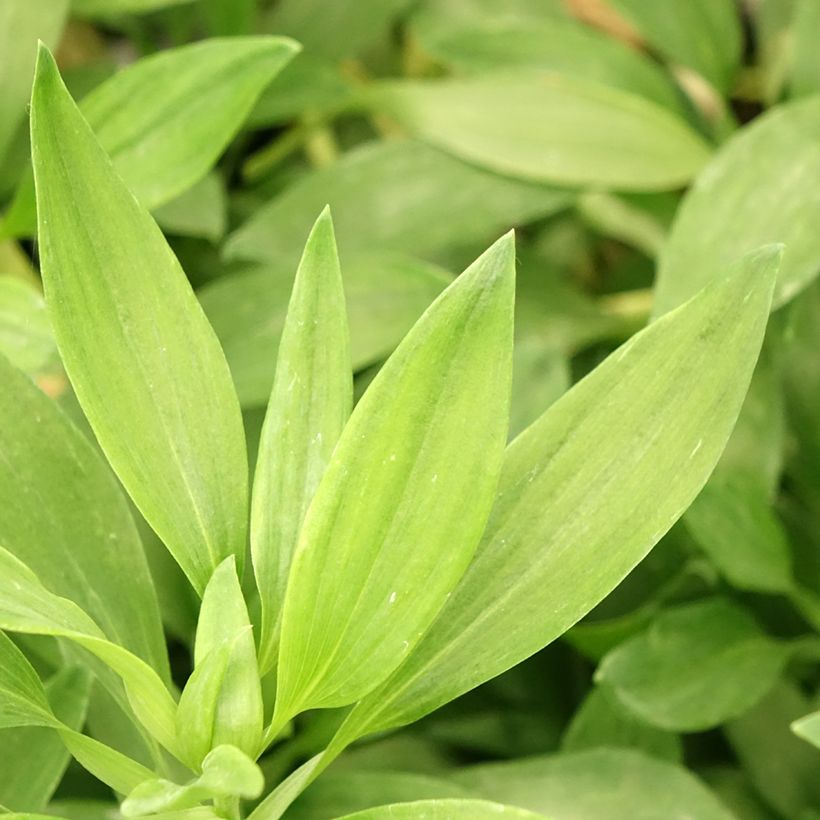

Flowering
Foliage
Plant habit
Botanical data
Alstroemeria
Duc d'Anjou Pierre
Alstroemeriaceae
Peruvian Lily, Lily of the Incas
Cultivar or hybrid
Other Alstroemerias
View all →Planting and care
The Duc d'Anjou Alstroemerias are planted in spring, choosing a sunny or partly shady location, in a light, well-drained, well-worked soil, with a sandy or loamy tendency and low in lime, neutral to slightly acidic, and not too fertile. While they appreciate some coolness to support their flowering, they adapt quite well to dry soils in summer. These plants are quite hardy, down to -15°C (5°F), if the soil remains dry in winter. You can protect the stump with a thick mulch of leaves or fern fronds in autumn. Slugs love young shoots; make sure to protect them.
Cultivating them in pots allows you to shelter the plants from severe frost combined with excessive humidity, by storing them in a bright, well-ventilated, and minimally heated space.
Planting period
Intended location
Care
Planting & care advice
-
, onOrder confirmed
Reply from on Promesse de fleurs
Similar products
Haven't found what you were looking for?
Hardiness is the lowest winter temperature a plant can endure without suffering serious damage or even dying. However, hardiness is affected by location (a sheltered area, such as a patio), protection (winter cover) and soil type (hardiness is improved by well-drained soil).

Photo Sharing Terms & Conditions
In order to encourage gardeners to interact and share their experiences, Promesse de fleurs offers various media enabling content to be uploaded onto its Site - in particular via the ‘Photo sharing’ module.
The User agrees to refrain from:
- Posting any content that is illegal, prejudicial, insulting, racist, inciteful to hatred, revisionist, contrary to public decency, that infringes on privacy or on the privacy rights of third parties, in particular the publicity rights of persons and goods, intellectual property rights, or the right to privacy.
- Submitting content on behalf of a third party;
- Impersonate the identity of a third party and/or publish any personal information about a third party;
In general, the User undertakes to refrain from any unethical behaviour.
All Content (in particular text, comments, files, images, photos, videos, creative works, etc.), which may be subject to property or intellectual property rights, image or other private rights, shall remain the property of the User, subject to the limited rights granted by the terms of the licence granted by Promesse de fleurs as stated below. Users are at liberty to publish or not to publish such Content on the Site, notably via the ‘Photo Sharing’ facility, and accept that this Content shall be made public and freely accessible, notably on the Internet.
Users further acknowledge, undertake to have ,and guarantee that they hold all necessary rights and permissions to publish such material on the Site, in particular with regard to the legislation in force pertaining to any privacy, property, intellectual property, image, or contractual rights, or rights of any other nature. By publishing such Content on the Site, Users acknowledge accepting full liability as publishers of the Content within the meaning of the law, and grant Promesse de fleurs, free of charge, an inclusive, worldwide licence for the said Content for the entire duration of its publication, including all reproduction, representation, up/downloading, displaying, performing, transmission, and storage rights.
Users also grant permission for their name to be linked to the Content and accept that this link may not always be made available.
By engaging in posting material, Users consent to their Content becoming automatically accessible on the Internet, in particular on other sites and/or blogs and/or web pages of the Promesse de fleurs site, including in particular social pages and the Promesse de fleurs catalogue.
Users may secure the removal of entrusted content free of charge by issuing a simple request via our contact form.
The flowering period indicated on our website applies to countries and regions located in USDA zone 8 (France, the United Kingdom, Ireland, the Netherlands, etc.)
It will vary according to where you live:
- In zones 9 to 10 (Italy, Spain, Greece, etc.), flowering will occur about 2 to 4 weeks earlier.
- In zones 6 to 7 (Germany, Poland, Slovenia, and lower mountainous regions), flowering will be delayed by 2 to 3 weeks.
- In zone 5 (Central Europe, Scandinavia), blooming will be delayed by 3 to 5 weeks.
In temperate climates, pruning of spring-flowering shrubs (forsythia, spireas, etc.) should be done just after flowering.
Pruning of summer-flowering shrubs (Indian Lilac, Perovskia, etc.) can be done in winter or spring.
In cold regions as well as with frost-sensitive plants, avoid pruning too early when severe frosts may still occur.
The planting period indicated on our website applies to countries and regions located in USDA zone 8 (France, United Kingdom, Ireland, Netherlands).
It will vary according to where you live:
- In Mediterranean zones (Marseille, Madrid, Milan, etc.), autumn and winter are the best planting periods.
- In continental zones (Strasbourg, Munich, Vienna, etc.), delay planting by 2 to 3 weeks in spring and bring it forward by 2 to 4 weeks in autumn.
- In mountainous regions (the Alps, Pyrenees, Carpathians, etc.), it is best to plant in late spring (May-June) or late summer (August-September).
The harvesting period indicated on our website applies to countries and regions in USDA zone 8 (France, England, Ireland, the Netherlands).
In colder areas (Scandinavia, Poland, Austria...) fruit and vegetable harvests are likely to be delayed by 3-4 weeks.
In warmer areas (Italy, Spain, Greece, etc.), harvesting will probably take place earlier, depending on weather conditions.
The sowing periods indicated on our website apply to countries and regions within USDA Zone 8 (France, UK, Ireland, Netherlands).
In colder areas (Scandinavia, Poland, Austria...), delay any outdoor sowing by 3-4 weeks, or sow under glass.
In warmer climes (Italy, Spain, Greece, etc.), bring outdoor sowing forward by a few weeks.































